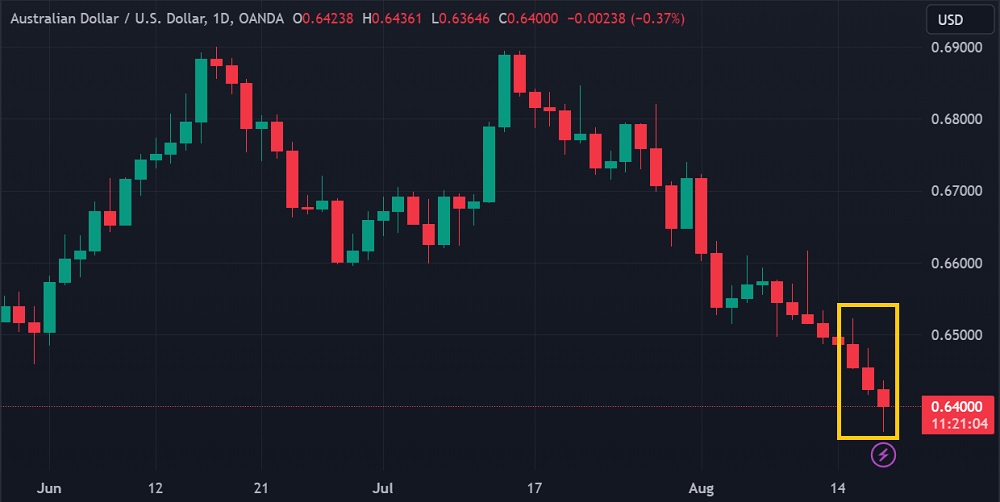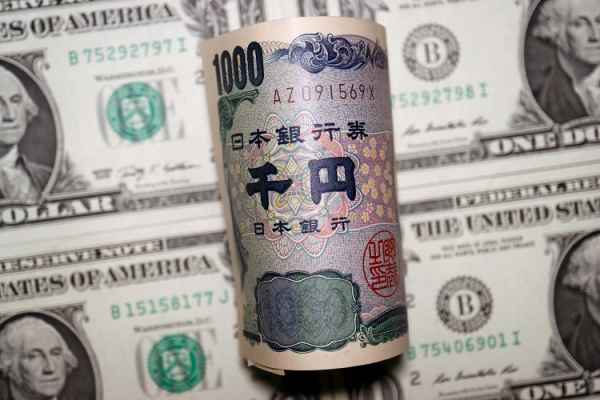Australia's unemployment rate is recorded to have increased from 3.5 percent to 3.7 percent in July 2023. As a result, AUDUSD fell.
The Australian Dollar slumped in the Asian trading session on Thursday (August 17) to reach its lowest level in the past nine months. Various factors weigh the Aussie, including China's sluggish economy and poor Australian unemployment data. As the news was written in the early European session, AUD/USD attempted to rise but remained constrained near the 0.6400 threshold.

Australia's unemployment rate increased from 3.5% to 3.7% in July 2023, whereas the consensus only anticipated a rise to 3.6%. Other details in Australia's employment data this time around are also bleak.
The Labor Force Participation Rate weakened from 66.8% to 66.7%. Australia's economy also lost 14.6k jobs in July, whereas the previous consensus anticipated an addition of 15.0k jobs.
These data indicate a clear setback in the Australian labor market with no silver lining. Consequently, the market is growing more convinced that the Reserve Bank of Australia (RBA) will not raise interest rates again soon.
"Keretakan akhirnya muncul dalam data ketenagakerjaan (Australia), dan itu akan menjernihkan keraguan mengenai apakah RBA sudah selesai menaikkan (suku bunga)," kata Matt Simpson, analis pasar senior di City Index.
Ia menambahkan, "Menurut saya mereka selesai (menaikkan suku bunga) pada tingkat 4.1% sekarang, dengan data yang terus-menerus lemah dari China dan pelonggaran dari PBoC mendukung (pendapat bahwa) suku bunga (Australia) sudah mencapai puncak."
The PBoC's decision to cut interest rates earlier this week has eroded market buying interest in high-risk assets such as the Australian dollar. Markets are also concerned about the domino effect risk from financial issues impacting the Chinese real estate giant, Country Garden.
Country Garden struggles to fulfill its financial obligations due to plummeting sales and tighter access to funding. The housing units it built to revitalize small Chinese cities are no longer in demand post-pandemic, causing the company to incur a loss of 6.1 billion yuan in 2022 and necessitating a reduction in its activities in those areas. However, the real estate sector significantly contributes to the revenue of small Chinese cities through property taxes and land sales.

 Dedicated FREE FOREX VPS
Dedicated FREE FOREX VPS Free FOREX Virtual Private Server
Free FOREX Virtual Private Server MT4 Demo Contest, Get $500
MT4 Demo Contest, Get $500 Sign Up for an Account, Claim 60% Deposit Bonus
Sign Up for an Account, Claim 60% Deposit Bonus Free MT4/MT5 VPS 2024
Free MT4/MT5 VPS 2024 Send E-mail and Get Free Merchandise
Send E-mail and Get Free Merchandise $1K Refer a Friend Bonus for Pepperstone Pro clients
$1K Refer a Friend Bonus for Pepperstone Pro clients Maximize Your Earnings with 100% Deposit bonus
Maximize Your Earnings with 100% Deposit bonus Trade to Win, $5,000 Monthly Demo Contest
Trade to Win, $5,000 Monthly Demo Contest Claim 30% + 15% Deposit Bonus from LiteFinance
Claim 30% + 15% Deposit Bonus from LiteFinance






